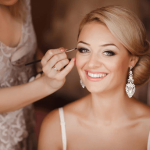With all the information the media puts out about sun exposure, you might think you know everything you need to know to be safe in the sun. Sometimes, though, there’s conflicting information out there that can be confusing. We’ve rounded up some of the most common misconceptions we’ve heard or seen on the internet and are here to set the record straight on sun exposure.
“I need to spend plenty time in the sun to get vitamin D”
Yes, your skin is designed to get vitamin D by producing it when your skin is exposed to the sun. That part is true. The part that’s not quite right is that your skin needs to be exposed to the sun for long periods of time. If you’re fair-skinned, all you should need is about 10 minutes of time in the midday sun without sunscreen to get enough radiation needed to produce 10,000 international units of vitamin D. This also depends on where you live and other factors, so it is a good idea to ask your dermatologist what’s best for you and your skin. Your body also only can produce a limited amount of vitamin D each day, so spending more time than your recommended amount will not result in more production of the vitamin. Instead of risking a sunburn in hopes of getting enough vitamin D, ask your dermatologist for dietary suggestions to supplement your vitamin intake and lather up your skin with sunscreen.
“I work indoors during the day and rarely go outside. Do I need to wear sunscreen daily?”
Some of us spend the majority of our days working indoors, missing the hours when the sun is especially strong. If you’re rarely outside when the sun is up, do you really need to apply sunscreen daily? The answer is surprisingly yes. We encourage you to wear a moisturizer with SPF or a light sunscreen daily to build good habits so that you’re already protected when you finally are out in the sun. If applying sunscreen becomes part of your daily routine, rain or shine, you’ll surely be protected when you do end up in the sun on vacation or over the weekend.
“I’m in my car – I can’t get harmful sun exposure, right?”
Wrong, unfortunately. While glass does block UVB rays and most windshields are treated to also block UVA rays, the side and rear windows of your car do allow in UVA rays. This means that when you’re driving around, thinking you’re out of the sun, you actually are getting sun exposure. Over time, this can really add up. In fact, it can lead to dramatic results. Sun damage and skin cancer cases tend to be more frequent on the left side of the body after years of driving. such as sun damage or skin cancer cases being worse on the left side of the body after years of driving. To be safe, apply a broad-spectrum sunscreen before driving around town and try to wear protective clothing to minimize exposure to the sun’s rays.
“I always wear sunscreen. I’m safe from skin cancer, right?”
While always wearing sunscreen is an excellent habit, you may still be susceptible to skin cancer…on your eyes. It may sound impossible, but your eyes actually are susceptible to skin cancer like the rest of your body. To avoid ocular melanoma or skin cancer on your eyelids or the skin around your eyes, find sunglasses that protect these areas from UVA and UVB rays. Always grab your sunglasses when you’re heading out in the sun!
“High SPFs don’t do anything more than lower ones.”
We’ve heard before that higher SPFs (such as SPF 80 or 100) don’t offer more protection to your skin than lower SPFs and are a waste of money. It’s true that the added protection you get is minimal after you exceed an SPF of 50, but it can help make up for application errors. Regardless of what SPF you’re using, be sure to reapply often.
“Dark skin doesn’t burn, so why do I need to protect my skin?”
If your skin burns easily and you have dealt with a painful sunburn or two in the past, you are likely going to think about sun exposure more than someone who never has had the hard lesson of a sunburn. However, if your skin doesn’t burn or rarely burns, that does not mean that you don’t get damaging sun exposure. In fact, a tan is a sign of sun damage, just like a burn or freckles are. Sun exposure leads to cell damage in all skin, so it’s important to use sunscreen and minimize time in the sun, no matter how dark your skin is. It’s also important to note that it may be harder to find signs of skin cancer on people with dark skin, which could lead to late detection.
“Does the number of sunburns you get directly affect how likely you are to get skin cancer?”
Your risk for skin cancer doubles after you have experienced five or more sunburns. The best way to protect your skin from both sunburns and skin cancer is to limit your exposure to the sun through sunscreen, wide brimmed hats, long sleeved clothing, and avoidance of the sun’s peak hours of 10 am – 2 pm.
We’re Here to Answer Your Sun Safety and Skin Cancer Questions
If you have other questions about your skin, sun exposure, or how to avoid skin cancer, we invite you to make an appointment with our board-certified dermatologists. It’s our job to help you be healthy and enjoy your summer while minimizing your risk of sunburns and sun damage. We recommend you come into our office at least once yearly to have your skin evaluated, but also be sure to check your own skin monthly to keep an eye on any changes you may experience. If you’re due for an appointment, visit our website to see which of our locations is most convenient for you.
We’ll see you soon!

